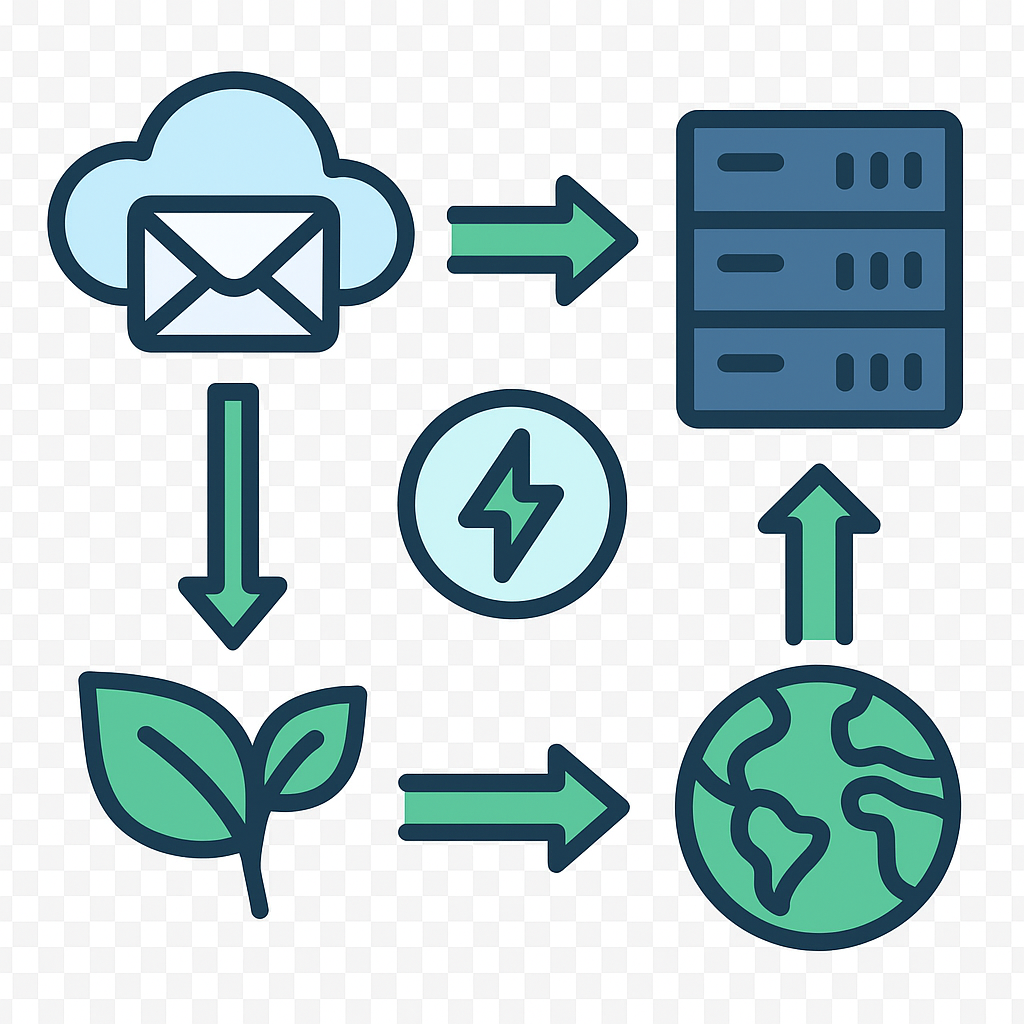As digital communication grows at an exponential rate, so does the environmental footprint of our inboxes. Every email stored in the cloud consumes energy—fueling massive data centers, driving up electricity demand, and contributing to carbon emissions. Fortunately, disposable email services like EyadTMail.online offer a greener alternative for low-stakes, one-off communications. This article explores how email storage affects our planet and how leveraging temporary addresses can reduce your digital carbon footprint.
1. The True Cost of Email Storage
a. Energy Consumption of Data Centers
Data centers house servers that run 24/7, cooling systems included. Studies show that worldwide data centers account for roughly 1% of global electricity use—and that figure is rising as more businesses migrate to the cloud.
Idle Power Losses: Even when idle, hard drives and processors draw significant power.
Cooling Requirements: Maintaining optimal temperatures uses extra energy for fans and cooling fluids.
b. Carbon Emissions and E-Waste
Emission Sources: Electricity often comes from fossil fuel–based power plants, releasing CO₂ and other greenhouse gases.
Hardware Turnover: Frequent upgrades and server replacements generate electronic waste, which may end up in landfills if not recycled properly.
2. How Long-Term Storage Traps Energy
Keeping every email “just in case” may cost you more than just gigabytes:
Archival Bottlenecks: Archived data needs dedicated storage tiers, which are still energy-intensive.
Redundant Copies: Backups and geographically distributed replicas multiply the resources used per message.
Researchers estimate that storing one gigabyte of email (roughly 10,000 text-only messages) can consume up to 2 kilowatt-hours per year—equivalent to running a small LED bulb continuously for a month.
3. Disposable Email: A Lighter Footprint
🎯 By using temporary email addresses for noncritical tasks, you minimize the volume of active and archived data on mainstream servers:
Short-Lived Lifespans: Once an alias expires (10 minutes to a few days), its stored messages are purged—freeing up storage immediately.
No Long-Term Archival: Ephemeral usage means fewer redundant backups and lower cooling demands.
EyadTMail.online automatically deletes expired inboxes and associated data, ensuring that only essential emails contribute to the environmental load.
4. Quantifying the Savings
Let’s run a quick scenario:
Traditional Storage: You sign up for 100 websites with your permanent email, each sending a confirmation and two follow-ups. That’s 300 emails.
Disposable Model: You generate 100 temporary addresses, let them expire after archiving any necessary content, and delete automatically.
If each email uses 0.0002 kWh to store per year (a conservative estimate), permanent storage of those 300 emails draws 0.06 kWh annually—that’s nearly 22 kWh over a decade for just one user’s sign-ups. A disposable model cuts that to virtually zero after expiration.
5. Best Practices for Green Email Use
Reserve Permanent Accounts: Keep long-term storage for vital records (tax docs, legal notices)—not marketing blasts.
Purge Old Folders: Regularly delete newsletters, promotions, and other nonessential categories.
Leverage Disposable Aliases: Use EyadTMail.online for one-off registrations, coupon claims, or guestbook entries.
Monitor Usage: Review your inbox size and identify high-volume ops that could shift to temp emails.
Final Thought
While a single throwaway address may seem trivial, the cumulative impact of millions of users storing tens of thousands of messages each day adds up—and it’s a burden on both infrastructure and the planet. By intelligently integrating disposable email into your digital routine, you not only declutter your inbox but also contribute to a more sustainable, energy-efficient internet. Reduce your digital carbon footprint one temporary address at a time.

